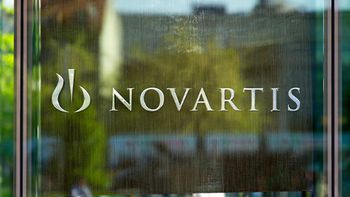
- Pharmaceutical Commerce - March/April 2012
Bringing room-temperature pharma shipping under the 'CRT' umbrella
'Controlled room temperature' (CRT) shipping is being transformed from standard shipping processes to engineered, compliance-ready processes and materials
The management of temperature during shipping pharmaceutical products is undergoing a quiet revolution today. In recent years, the handling of “cold chain” products (those that require refrigeration) has become much more tightly regulated across the entire pharma supply chain. Now, industry quality managers and governmental regulators are paying closer attention to “controlled room temperature” (CRT) products. Historically, cold-chain products received some type of specialized service, while CRT products could be shipped with standard packaging, in standard logistics processes; now, both are receiving specialized services, geared to the temperature ranges listed on the product label. Nevertheless, there are, and will be, significant differences in managing the logistics of the two classes of products. The three most notable distinctions:
1) “Cold chain” means, almost universally, a 2-8°C temperature range. CRT is a mixture of many different storage and shipping temperature ranges, as identified on the product label (see Fig. 1).
2) Control processes for cold chain have been established over time that are well understood, reliable and optimized. CRT shipping has had little or no control to date; control processes are just now being established.
3) Possibly the most difficult difference to contend with is the use of refrigerants. Cold-chain refrigerants have been either water-based (a material that has a phase change at 0°C, which is close to the 2-8°C range), or phase-change materials (PCMs) engineered to operate at the 2-8°C range. CRT shipping (say, in the 20-25°C range) does not have widely available PCMs; PCMs are costly and difficult to handle; and water-based refrigerants do not have the same utility.
This article will discuss the three challenges—and potential solutions—including process development and optimization, validation (Operational Qualification, OQ; and Performance Qualification, PQ) and routine monitoring. Common mistakes will be pointed out. Finally, the factors that go into shipping outside of label claim will be discussed.
The regulatory challenge
As of the end of 2011, there are more than 30 government regulations worldwide pertaining to Good Distribution Practices (GDPs) that have been issued or updated. Most recent updates are:
1) Health Canada’s reissuance of 0069 (These are their GMPs that include supply chain controls.) Health Canada is actively auditing wholesalers and manufacturers regarding these requirements.
2) Irish Medicines Board’s reissuance of its GDPs (Oct 2011) - Release of shipments into Ireland need to have hard copies of temperature records for products to enter commerce. Stability data is required for any temperatures recorded outside of label claim.
3) EU update to GDP and request for comments on supply chain temperature management.
4) Saudi Arabia’s mandate to ship all pharma products temperature-controlled and monitored.
5) Israel’s requirement (no published regulation) to ship all pharma temperature-controlled and monitored.
6) Many other countries are enforcing supply chain temperature management processes. It is expected that most national Ministries of Health (MoH) will follow suit in that if a storage temperature is specified on the product label, then the product will need to be shipped under controlled and monitored conditions.
CRT refrigerants
Controlled shipping (in any temperature range) can be categorized as passive or active. Passive systems rely on a source of energy (ice or other refrigerant) and insulation; the “cold” contained in the system gradually dissipates during the shipment. Active systems employ batteries or other sources of power to generate additional cold (and, in some cases, heating for low-temperature conditions). Active or passive systems give additional options for both CRT and cold-chain deliveries.
Traditional passive shippers utilize water-based refrigerants which change phase (freeze/melt) at 0°C, which can be efficiently and cost-effectively used to maintain frozen or refrigerated temperatures during transit. The challenge of utilizing these same materials for CRT applications is the reliance on the specific heat (the energy required to raise the temperature of a unit mass by one degree) instead of the latent heat (the amount of energy absorbed or released during a phase-change process) of water to control the temperature inside the shipping system.
Generally speaking, latent heat energy available in refrigerants for cooling pharma products is greater than energy available from specific heat, but the disparity between the phase-change temperature of water-based refrigerants (0°C) and the higher temperature requirement for CRT products (e.g., 20°C) makes them less suitable for CRT applications. As the temperature range of CRT products widens, the use of water-based refrigerants becomes more effective. There is a tradeoff between the amount of temperature protection needed for the shipping system and the weight/cost of the solution. Therefore, shipping CRT products in a 20-25°C range can be cost-prohibitive as compared to a 2-30°C range.
Specialized phase-change materials (PCMs) can be more efficient than water-based refrigerants because they utilize the latent heat for temperature control. They can also be tailored to specific temperature ranges so as to match the temperature requirements for the product. These materials are typically significantly higher in cost and can be difficult to condition in a distribution operation. Some designs may call for a 22°C PCM to be used in a liquid phase, which could require the material to be heated prior to use since many warehouses may have an ambient temperature of 15-22°C. While refrigerators and freezers are common in many warehouses, warmth-generating incubators typically are not common.
Pharma products requiring CRT conditions vary from small, liquid-filled vials to bottles of capsules or pills. The wide disparity between the thermal mass of these product types can affect the type of packaging solution needed for thermal protection. Smaller thermal-mass products will require proportionately more packaging protection to maintain the same amount of temperature protection as a larger thermal-mass product. This can also be seen when comparing small parcel vs. pallet load solutions. Fig. 2 is an example of a 5-30°C passive shipping solution payload comparison.
As can be seen, the payload to outside dimensions (OD) ratio goes up as shipping size goes up and cost per unit drops.
Operational and performance qualification (OQ / PQ)
In meeting the regulatory requirements for OQ/PQ, it is standard practice to choose a representative product sample to test and qualify procedures. Choosing an unrealistic minimum thermal-mass product can result in an over-engineered and high-cost solution. Conversely, choosing an advantageous product load could result in real-world failures during shipments. The best approach is to bracket the lowest and highest thermal-mass products, as well as analyze your shipment history to begin with appropriate test material.
Ambient temperature profiles for CRT shipments can be more challenging than other temperature-sensitive products—there might be little documentation of prior practices or conditions. If the shipments are going general cargo (nonperishable), then more severe ambient temperature profiles should be considered for transportation. Some countries (e.g., Saudi Arabia) can experience temperatures up to 50°C; conversely, Canada can see -20°C during transportation. Designs for special handling or packaging can be used for these harsh-environment distribution lanes, as well as to offset these extremes specifically. However, the overall approach is to optimize the supply lane in line with the development of the passive shipper.
As with frozen or refrigerated OQ/PQ testing, determining the proper placement for temperature monitoring devices is important. Placement on an external wall of the product (between the product and insulation) can result in temperature readings that don’t accurately reflect the product temperature, and likewise, placing the temperature monitor too close to the refrigerant can also give erroneous temperature readings. As part of the OQ, temperature monitor placement needs to be established and specified for routine shipments.
Some mistakes/challenges
Employee training is essential when undertaking CRT procedures, both for employees with experience in cold-chain shipping and with those who have not handled any sort of temperature-controlled shipping. If the employees are familiar with packaging temperature-sensitive products, they may feel uncomfortable using refrigerants with new conditioning requirements. There may be an erroneous perception that refrigerants should be placed in the freezer or refrigerator, but CRT materials may not need any special conditioning. If the employees are not familiar with thermal packaging, implementing any additional steps to the packaging process beyond shipping unprotected corrugated cases can be a challenge. A proper training program must be thought out and implemented to include at minimum proper conditioning of packaging components (refrigerants and shippers), pack-out procedures to include temperature monitor locations (under change control), and any logistics considerations.
Even the simple availability of packaging materials can be a challenge where cold-chain distribution has not been performed previously. Warehouse managers will have to pay attention to the inventory of packaging materials, and to allocate necessary space for them. Some type of just-in-time delivery from the packaging materials supplier might be called for.
Most temperature excursions occur during transitions between transport modes (truck to truck, tarmac to airplane belly, etc.). Either the packaging needs to be robust enough to handle these situations (e.g., over-engineered passive shipper) or special logistics measures (e.g., shipping perishable vs. general cargo) need to be taken. Both options can increase cost.
Overall, adding any thermal packaging protection adds cost in various areas: packaging materials, labor, and increased freight per unit (more shipments and heavier/larger packages). A well thought-out approach to proper CRT product management needs to be developed. The more restrictive the temperature range specified, the higher the costs.
Supply Chain Integrity (SCI) optimization
All of the above issues should be tied to a holistic approach to Supply Chain Integrity (See WHO GDPs). The four main pillars of GDP/SCI are:
1) General GDPs
2) Good Import Practices (GIPs)
3) Temperature Control Management
4) Distribution Control Systems (DCS includes track and trace, e-pedigree, serialization, etc.)
All four of these pillars of the GDP process have to be integrated. An example of a non-integrated process is a temperature-management PQ that does not take into effect the importation requirements that can extend the supply chain process by 48 hours. So, for example, a passive shipper is validated vs. an adequate ambient profile for 72 hours; however, the import paperwork is not fully complete and the broker or freight forwarder is unaware that the product is under a restricted operating range. So due to the incomplete import paperwork, customs (or the MoH) holds the shipment up past its “qualified” 72-hour shipping time, and even though the shipment gets release by the customs group or MoH, the incoming temperature requirement has been violated.
Shipping outside of label claim
As stated earlier, CRT storage temperature labels are very varied, within companies, within product families and across country borders. However, many existing CRT products are more robust than the stability data initially filed. Many CRT products have a 25°C/60%RH (relative humidity) requirement for full shelf life (done initially and annually) or a 30°C/65%RH requirement, and accelerated conditions of 40°C/75%RH (for 1-3 months), as specified per the International Committee of Harmonization (ICH) stability requirements. Unfortunately, since it has been assumed colder temperatures slow down chemical degradation, stability studies on CRT products at temperatures below 15°C are not normally performed. An optimal process for a company to adopt for CRT products is to perform temperature cycle studies up to 50°C and freeze/thaw studies down to -15°C (return to 25°C). It is recommended to use these data to have a standard CRT label of: (ref PDA TR 53):
¥ Store at 2-30°C
¥ Ship at -15° to 40°C (up to three months)
¥ Excursion permitted up to 50°C for two weeks
If the data don’t support the above recommended standard label claim, then the product has to be labeled differently, and appropriate testing and stability studies need to be performed.
There are various options available to control CRT products during transit. The options include:
Passive Systems
¥ Standard refrigerants (water-based) and insulated containers
¥ Specialized refrigerants/PCMs and insulated containers
¥ Insulation only (i.e., insulated container or pallet cover)
Active Systems
¥ Temperature-controlled trucks
¥ Temperature-controlled ocean containers
¥ Pallet and parcel size containers (i.e., RKN units)
While there are many factors to consider when choosing the correct option, including cost, shipment size (pallet or parcel), duration of shipment (overnight vs. ground transit) and ease of use, the on-label temperature required (shipping range) during transit is the most important aspect to consider (e.g., ship 15-25°C vs. 2-30°C). Fig. 3 lists some common shipping temperature ranges for CRT products and the associated level of temperature control. Usually, the more restrictive the temperature range, the higher the cost per shipment.
Fig. 4 summarizes the various options available for CRT product shipment, aligned with the relevant selection criteria. Most active systems typically offer a high level of temperature control (as long as the system has been fully qualified) and are relatively easy to use, but can be costly and normally require larger shipment sizes. Passive systems can be used for any shipment size and are typically less expensive than active systems (on a comparable shipment size basis), but the level of temperature control varies greatly depending on the type of design.
Fig. 5 shows some general cost ranges for common shipping options: active vs. passive, and for various temperature ranges. Regardless of the system selected, the size of the shipment has a great effect on the total cost of the shipment. Smaller shipments that require a more restrictive temperature control will be the most costly, while larger shipments with less restrictive temperature control the most economical. Therefore it is advantageous to ship large loads with supporting stability data to allow shipping outside of the label claim. Provided that there is relevant stability data to allow for temperature excursions, shipping larger loads is more cost-effective, has fewer excursions (because of the larger thermal mass), and presents fewer operational problems. Implicit in the cost effectiveness is greater energy efficiency (less energy consumed per unit of shipment), thus providing “green” benefits as well.
ABOUT THE AUTHORS
Anthony (TJ) Rizzo, Director of Sales & Marketing at Cold Chain Technologies (Holliston, MA), where he was previously a Strategic Account Engineer. He has been extensively involved in industry groups including PCCIG task forces. TJ graduated from Pennsylvania State University with a BS in mechanical engineering and is pursuing an MBA at the University of Massachusetts.
Dave Ulrich is QA Director, Distribution and Logistics, at Abbott Labs (Abbott Park, IL). His responsibilities include standardization and optimization of quality systems (cGDPs), compliance for supply chain temperature management, e-pedigree/Track-n-Trace, serialization, and import export activities. He has been at Abbott 25 years in various roles in manufacturing QA and plant maintenance, validation and engineering. Previous to Abbott he was a laboratory manager at a Chicago area hospital.
Articles in this issue
over 13 years ago
A conversation with Jeffrey Berkowitz, Walgreensalmost 14 years ago
Storing controlled substances safely and efficientlyalmost 14 years ago
Biosimilars take a big step toward the marketplacealmost 14 years ago
Adding rigor to the adverse event reporting processalmost 14 years ago
Supply chain issues for 2012almost 14 years ago
Cancer care in the US -- looking back, looking forwardalmost 14 years ago
A conversation with Chris Smith, H. D. Smithalmost 14 years ago
USP ventures into standards for supply chain integrityalmost 14 years ago
McKesson deepens ownership in Canadian retail pharmacyNewsletter
Stay ahead in the life sciences industry with Pharmaceutical Commerce, the latest news, trends, and strategies in drug distribution, commercialization, and market access.




